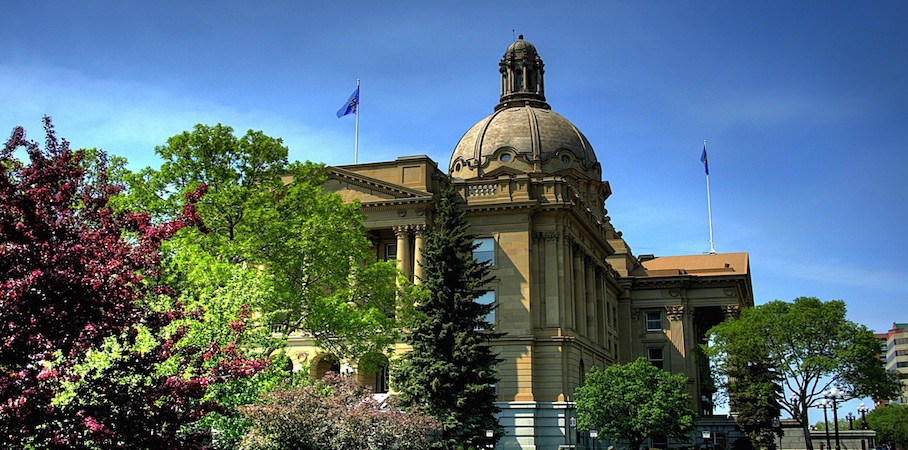
Earlier this fall Alberta’s Economic Development and Trade Minister Deron Bilous appointed Gord Lambert to chair a Climate Technology Task Force, which will engage stakeholders and advise the government on a framework for climate change innovation and technology.
In addition to supporting research and development and investing in new technology ventures, let’s also create opportunities for the scores of innovators and influencers in Alberta to interact with one another in unpredictable ways…
Gord has been a key advisor to the Energy Futures Lab (EFL) since its inception. Recently, he shared his tips and ideas on innovation with the EFL Fellows. An interview with Gord summarizing those ideas and his advice for the EFL appears here. Gord is one of three members of the Province’s five-person panel who are part of the EFL community. The others are EFL Advisory Council member Suzanne West (whose EFL interview appears here) and EFL Steering Committee member Sara Hastings-Simon.
Here are my top six suggestions for the Task Force, drawing on the experience and insights of the Energy Futures Lab so far:
- Don’t forget social innovation. The development and deployment of new technologies is certainly critical for Alberta to achieve its climate leadership goals and position itself for sustainable prosperity in a lower-carbon, global economy. That said, it’s important that we not overlook the important role of culture in creating or inhibiting our ability to innovate and to adopt new technologies. Not to mention our capacity to sustain a public commitment to a policy direction in favour of climate leadership. Creating a conducive environment for climate-related social innovation should be part of the suite of recommendations alongside advice on technological innovation. In addition to supporting research and development and investing in new technology ventures, let’s also create opportunities for the scores of innovators and influencers in Alberta to interact with one another in unpredictable ways, where the outcomes are not pre-determined. Let’s make sure this effort goes out of its way to bring “strange bedfellows” together — technology innovators with artists, environmental activists with community leaders, oil and gas executives with students, clean technology pioneers with First Nations leaders.
- Focus on the big challenges. Let’s accept that we don’t know the answers yet to some of our biggest challenges and make those the focus of our innovation agenda. For example, we don’t yet know how to dramatically lower the carbon intensity of oilsands production or how to transform carbon dioxide into carbon-based materials instead of releasing it to the atmosphere. But we know we’ll need to do so if our vast hydrocarbon resources are going to continue to be a source of prosperity in the low-carbon global economy that the world wants to build. Not quite having the answers yet to grand challenges like these creates an enormous opening for innovation.
- Leverage our strengths. Alberta’s greatest future opportunities surely arise from our current and past strengths and assets: our industrial and engineering prowess; our natural assets like our vast sun, wind, geothermal, agricultural and biological resources; our knowledge of the hydrocarbon value chain; our institutions of higher education and educated workforce. Let’s not get so enticed by the shiny and new that we fail to capitalize on the tried and true.
- Begin with the end in mind. Innovation should not be an end in itself; rather a means to an end. For the wide range of actors and resources involved in our innovation ecosystem throughout the province to be aligned and co-ordinated in a way that gets the best bang for our buck, we need to be working toward a clear vision and common set of goals. In setting that long-term vision, let’s heed the wisdom in Al Etmanski’s piece called Goosebumps Never Lie. To truly rally the province behind ambitious goals focused on our biggest challenges will require a vision that is compelling and inspiring – not just rational and measurable. We can backcast from a compelling vision and then also from a desired portfolio of investments to enable the province to realize that vision.
- Take risks to create the future. It will surely be tempting to make the majority of our innovation investments in technology to enhance our competitiveness in the near-term horizon, especially because of the reality of today’s economic problems. But let’s not lose sight of the fact that markets are changing dramatically due to forces well beyond our borders. If the past couple years have shown us anything, it’s that the rules of the game can change quickly. If we’re only playing for today’s game, we might miss our greatest opportunities. So, let’s not just determine our investment priorities by forecasting current trends. Let’s also choose a future that we want to see, and make some investments in trying to create that future. This probably means betting on some long-shots with tremendous upside. I view carbon utilization (i.e. technology to turn carbon dioxide into useful materials) as a prime example of this and something that should be a big innovation priority for the province.
- Generate new narratives. Narratives matter. The stories we tell ourselves about energy and the environment in Alberta are arguably our greatest barrier to innovation. We need to step beyond the polarized and polarizing narratives that in recent years have kept us stuck in camps. Climate innovation is not about good guys and bad guys, dirty versus clean industries, people who support oil and gas and people who do not. Building a resilient economy for a low-carbon future will require the resources and capabilities of Albertans from all sectors of society. Clean tech is not a niche sector, but an approach that can be applied across all sectors. Let’s use our public investments in innovation and technology to consciously begin to tell new stories and shape new narratives that help overcome the polarization that dominates public discourse on climate change.

Chad Park is the Chief Innovation Officer at The Natural Step and Director of the Energy Futures Lab



